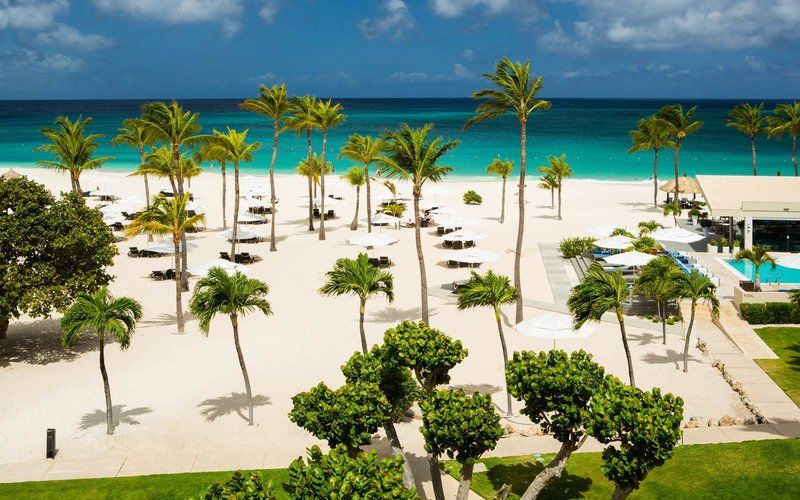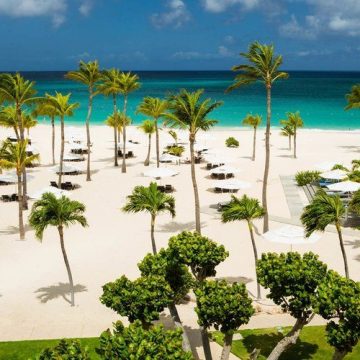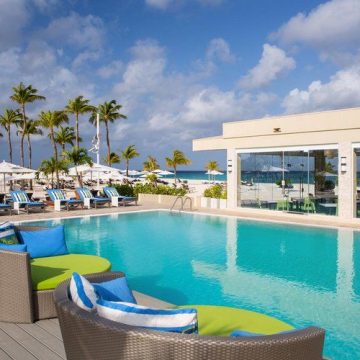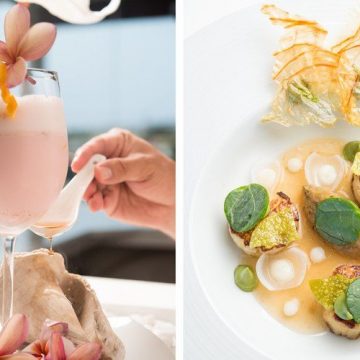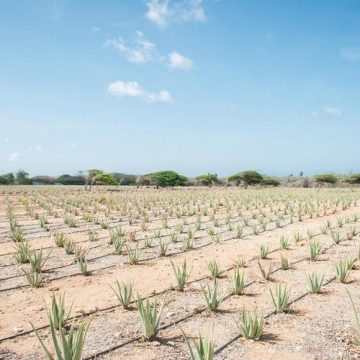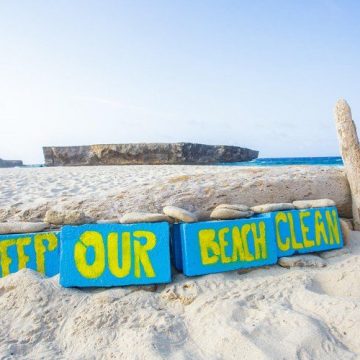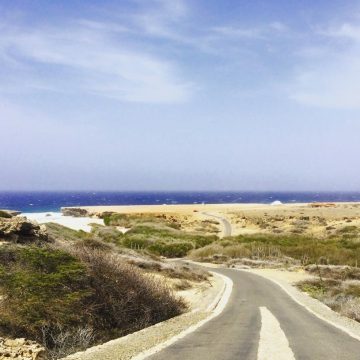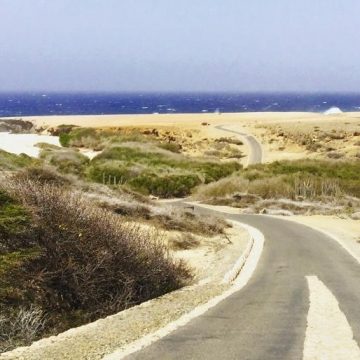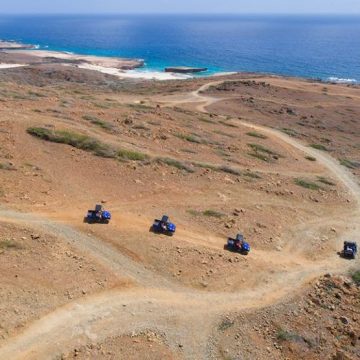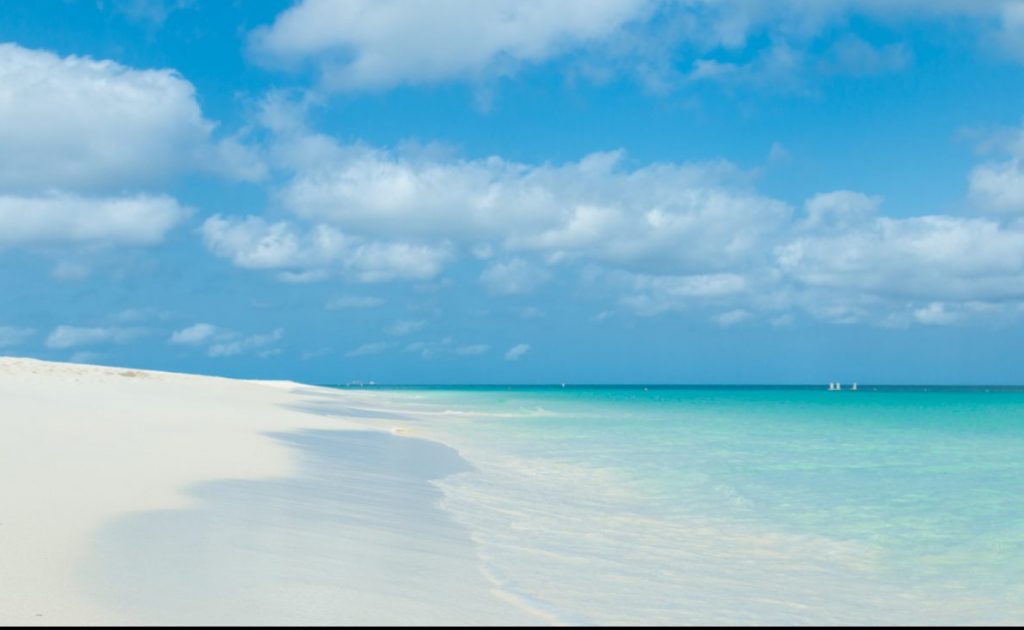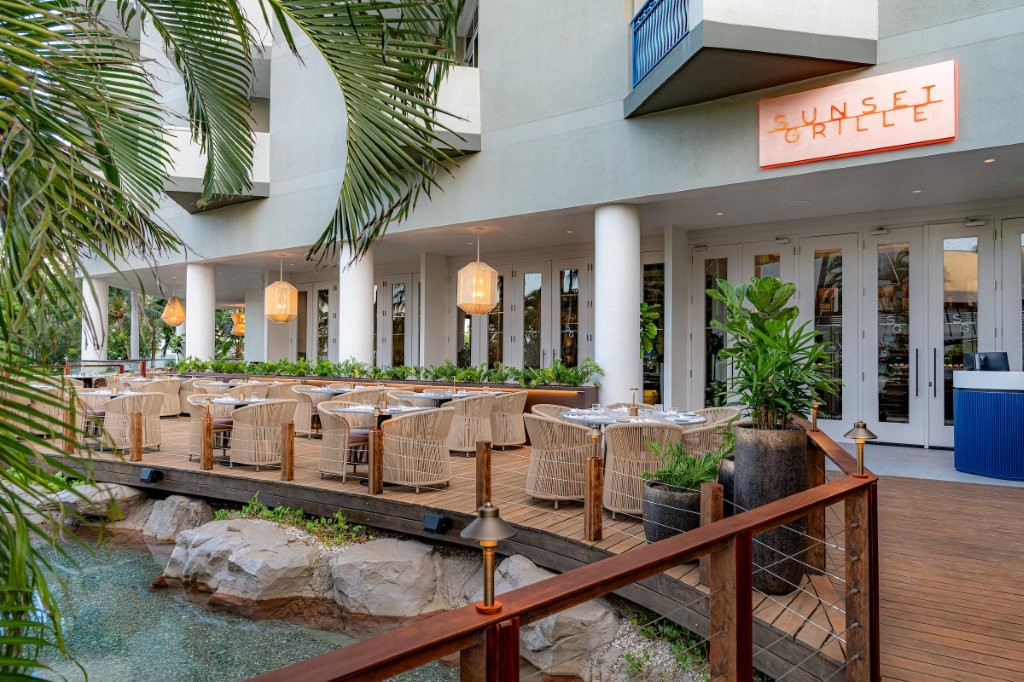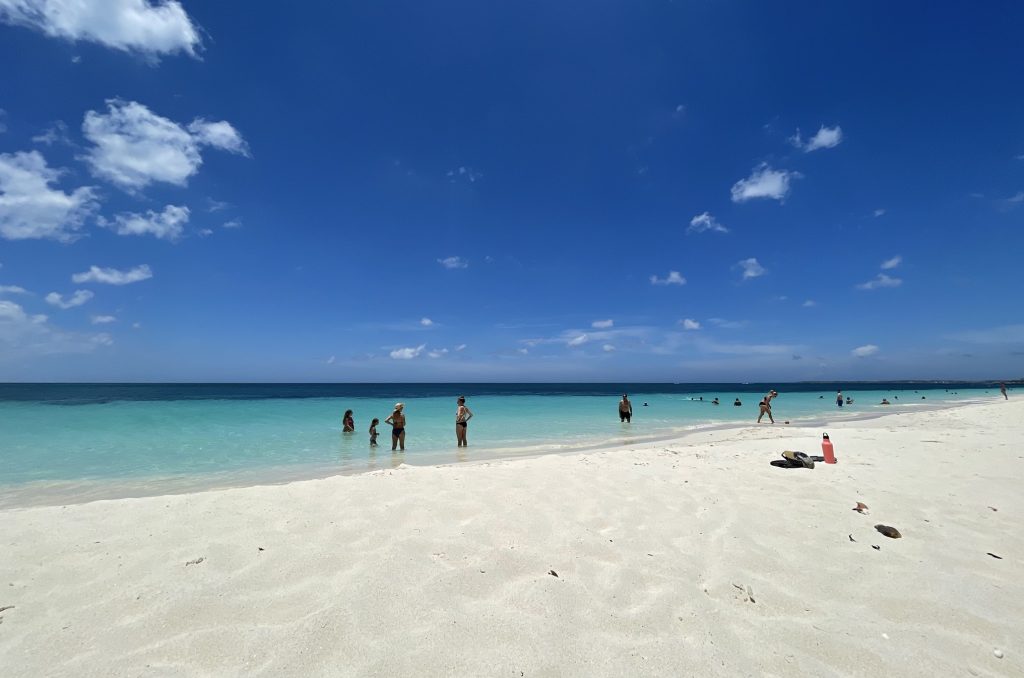Article written by Nina Ruggiero, Travel + Leisure
An eco-friendly movement is making this the place to be for unspoiled beaches and fresh Caribbean cuisine.
The thought of Aruba conjures up images of fofoti trees leaning lazily over white sand beaches; of tangled mangroves shading still, turquoise waters. But those who venture beyond the idyllic west coast will find it’s an island of topographical contradictions: Just minutes from those familiar tropical scenes, cacti rise from arid earth while volcanic cliffs are beaten down by powerful surf to the east.
Together, these dramatic landscapes form one breathtaking isle, but they make sustainability a complicated matter. In recent years, Aruba’s government has ramped up efforts to boost local farming, chefs have begun to focus on locally grown ingredients, and more hotels have turned their attention toward eco-friendly operations.
But it isn’t just Arubans who feel the need to preserve their precious, limited natural resources — tourists are known to pitch in at beach and reef cleanups and embrace green initiatives like the region’s first bikeshare program as though the island were their own. Aruba attracts more repeat visitors than any other Caribbean destination, after all, and they have to make sure there will always be something to come back to.
Hotel on a Mission
Remnants of an orange sunset fade over Eagle Beach as Tisa LaSorte, director of sales and marketing at Bucuti & Tara, reflects on how the 30-year-old boutique resort came to be while perusing the veggie-focused dinner menu on an iPad handed over by a waiter.
“He was struck by the beauty of the beaches,” she says of Ewald Biemans, the resort’s owner, who came to Aruba from Austria in 1971, “and immediately he felt a need to protect them.”
Photo courtesy of Bucuti & Tara Beach Resort
The hotel’s mission to integrate guests into the surrounding community is evident in the details: solar panels, reusable water canteens, grounds lined with indigenous plants, monthly beach cleanup collaborations between staff and guests, music-free nights to draw attention to the sounds of the ocean.
“He wanted to be sustainable before it became popular,” LaSorte said, “and the hotel evolved in sustainability as his knowledge of it grew.”
The fruits of Biemans’ labor are palpable: the oceanfront Tara Wing was completely renovated in 2017, but the star of every suite is still its unobstructed view of pristine coastline.
Photo courtesy of Bucuti & Tara Beach Resort
Taste of the Island
As a chef who was born, raised, and trained on-island, Urvin Croes has a special stake in the locally sourced ingredients on the menus at his two buzzed-about restaurants, White Modern and The Kitchen Table.
His desire to create contemporary Aruban dishes that “weren’t touristy” led him to develop relationships with area farmers and the local culinary school. “We take enormous pride in what we do,” he said, “not for the restaurants or [their] patrons, but for Aruba.”
Photo courtesy of White Modern
Croes admits consistency in production can be a challenge on the island, but it’s one he overcomes by sourcing from a variety of farmers and rotating his menus.
The intimate, 18-seat Kitchen Table serves an eight-course tasting menu that changes monthly but always features dishes that “tell a story [about] the history and culture of the Caribbean,” like dabaru bean tartar with local octopus. At White Modern, Asian and Caribbean flavors shine through in fresh dishes like the rotating, 30-ingredient summer salad, which Croes says includes a taste of all the produce Aruba can offer, from mini cucumbers and microgreens to edible flowers.
He works with local forager Frank Kelly, who finds the edible flowers, plus seaweed, octopus, and sea urchins and supplies them to restaurants. “I sit with the chefs and talk about the dishes,” Kelly said. “This gives me a better perspective of what to offer them.”
Kelly has been foraging Aruba since he was a child. ”My grandfather [and I] used to go to the shores of the southside to pick coconuts for my grandmother,” he said. “She made coconut oil and sweets from the bounty.”
He says 30 different types of flowers can be found blooming around the island at various times of year. Business has been busy lately, as festivals and parties look to incorporate his finds into the dishes they’re serving. But for Kelly, it’s about much more than turning a profit.
“The real taste of Aruba lies in every corner of this magical island,” he said. “I do what I do because I love to do it. I love my island to the bones.”
Fighting for Farming
Many know of Aruba’s innovative aloe farm, reaping the medicinal and cosmetic benefits of the plant since the late 19th century, and it’s also used locally in smoothies and salads. But produce such as lettuce, tomatoes, cucumbers, okra, bell peppers, squash, beans, melons, and dragonfruit are also grown on small farms scattered throughout the island — with the goal of self-sufficiency, not exporting.
Photo courtesy of Aruba Aloe
“The government has always been involved in encouraging people to plant,” Jonathan Boekhoudt of Aruba Tourism Authority explains, “but in the last eight years [they] have been more aggressive in their approach.”
Start-up farms are offered special discounts on clearing and plowing the land, and given access to wells and dams where they can collect irrigation water. The Department of Agriculture even provides free lectures on the latest techniques for efficient planting, he says.
Keeping Beaches Clean
Every year, eco-conscious residents and travelers team up to protect the island’s precious coastlines at the Aruba Hotel and Tourism Association’s beach cleanup. The initiative, which touches everything from Arashi Beach on the northwestern tip to Baby Beach down south, saw more tourists than ever take part in November 2017.
Photo by Sergey Karpov, Alamy
Pamphlets are handed out at hotels, and presentations are made at local schools explaining the importance of taking action, Boekhoudt says, resulting in about 3,000 primary and secondary school participants. “Though the number of affected sites has not increased, what has changed is the number of participants at each site,” he said.
The date of the 2018 beach cleanup has not yet been announced, but on September 25, the Aruba Reef Care Project, sponsored by the Aruba Tourism Authority, invites visitors to get in the water with a dive instructor and clean up about two-dozen scuba sites as well.
Biking for the Future
For advanced mountain bikers, the rugged, dusty terrain around Aruba’s rocky Arikok National Park has become a destination in its own right, with three new trails opening in 2017. The sport offers a low-impact way to tour the remote area — arguably the most scenic section of the island — which is otherwise accessed by clunky 4×4 vehicles.
Photo courtesy of EL Tours Aruba
Meanwhile, over on the west coast in smoother territory, Emily Cartaya launched the Caribbean’s first bikeshare program, Green Bike Aruba, in June of 2017. The family-run company, sponsored by the local businesses it promotes, now has 100 bikes and eight stations that make it easy for tourists to get between the cruise ship terminal, main plazas, and resorts. For residents looking for regular exercise and a sustainable commute, unlimited monthly and annual rental plans are also available.
The most popular station is at Palm Beach — the busy strip lined with high-rise hotels like the Ritz-Carlton and Marriott — but Cartaya, who is originally from Venezuela, says she hopes the Aruban government will make cycling a priority and build more bike paths so it can continue to grow to less-visited parts of the island.
“Bike shares bring so many benefits to a city … it reduces congestion, accidents, and carbon, and improves air quality,” Cartaya said. “It brings health benefits to the users, it develops tourism, and improves access to places.”
Over 3,000 rides have been taken since June, and as the holidays approach, Cartaya expects more people than ever will be hitting the trails. “It has been received amazing,” she said. “I cannot wait to see how this system will behave in this coming high season.”
To discover more about our sunny, happy island check out VisitAruba.com!

